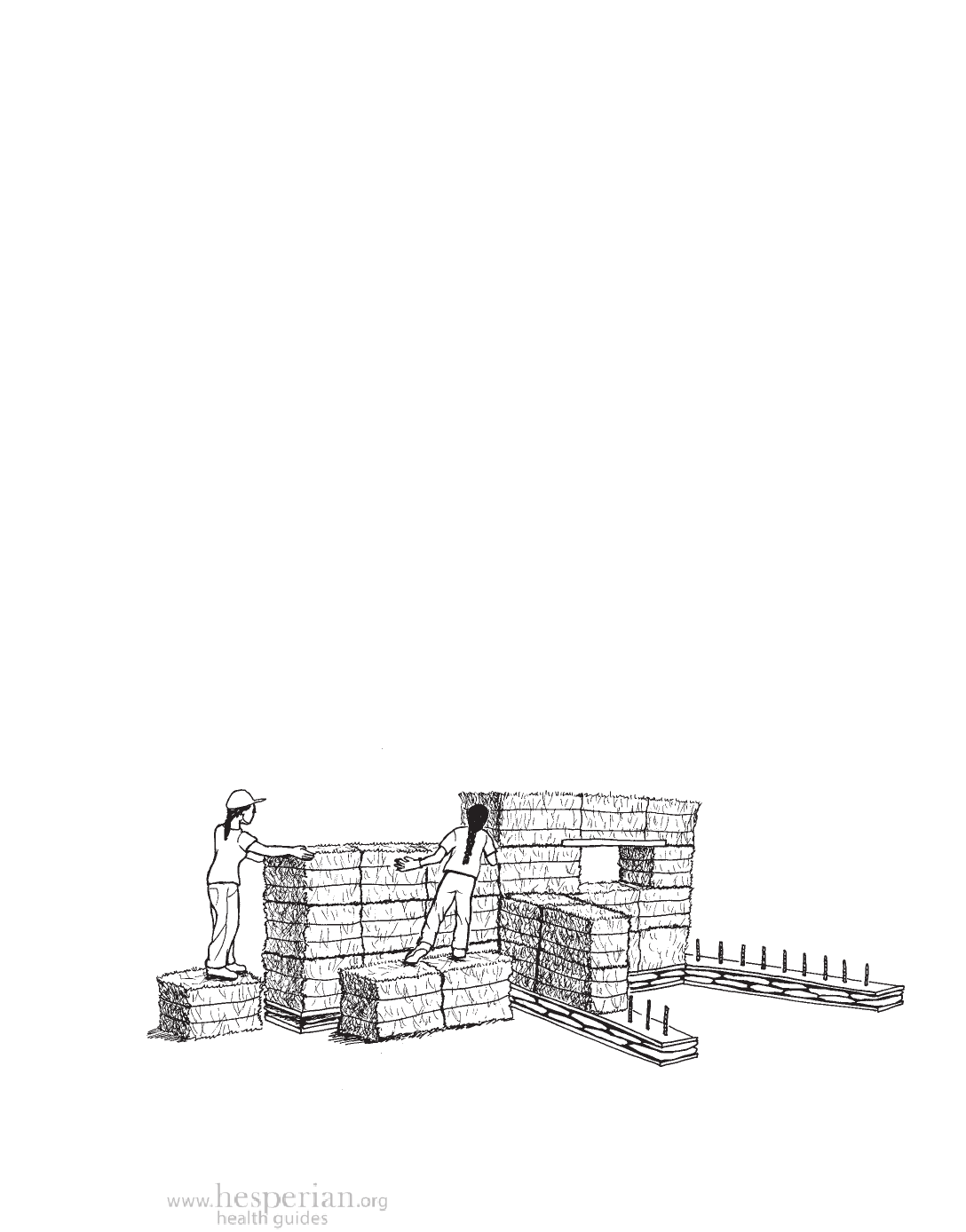
Building a Healthy Home 383
Earthquake resistant building
Many lives are lost every year because people live in houses that do not
withstand earthquakes. Houses of unreinforced concrete block, or unreinforced
brick or earth, and houses without solid foundations, are most vulnerable to
earthquakes. Houses made of traditional and flexible materials, such as mud
and sticks, wood, or piled earth mixed with straw (called “cob”), or straw bales
stacked and tied together and covered with plaster (see Resources) are better
able to withstand damage from earthquakes.
Combining traditional materials with improved building methods, such
as foundations, cross-braces, and waterproof plaster, can make houses safer,
more comfortable, and affordable. To reduce the risk of earthquake damage to
earthen houses:
• Build low, single story, small buildings.
• Make walls curved if possible, especially at the corners.
• If you build in a square shape, reinforce corners with wooden
cross‑braces. If wood is not available, you can use wire.
• Build a foundation on solid ground using lime mortar or concrete with
broken brick or large stones. Anchor the foundation materials together
by including sticks, bamboo, iron wire or metal rods in the mix.
• Secure the wall to the foundation using rush matting, sticks, nails, metal,
or iron wire cemented into the foundation.
• Use light materials for the roof (thatch or corrugated metal).
• To make brick or block houses safer, fasten the layers of brick or
blocks together. Attach crossbeams from one wall to the other, and
set horizontal braces between the beams to prevent the building from
moving side-to-side. Attach the roof to the crossbeams.
Light materials, like straw bales, make walls that are safer in
earthquakes, and help keep inside temperatures mild.
A Community Guide to Environmental Health 2012